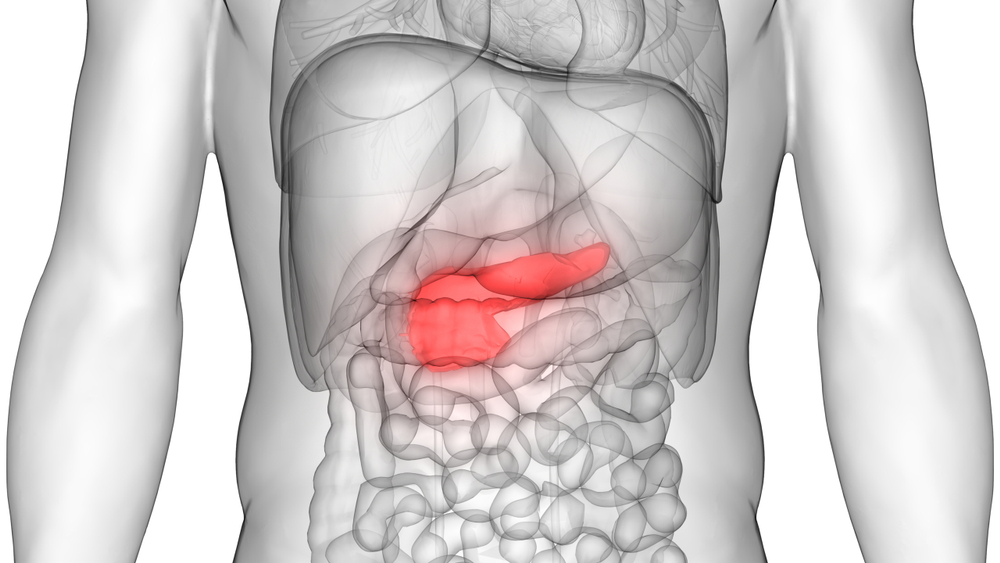
What is being tested?
Lipase is an enzyme made by the pancreas. It is released into the digestive tract to help digest fatty foods. It is also important in maintaining cell permeability, that is, allowing the cell wall to let nutrients easily flow in and to let waste easily flow out. It is normally found in the blood in small amounts. When the pancreas is damaged or inflamed (for example in pancreatitis) it releases more lipase resulting in a higher level in the blood.
How is it used?
The blood test for lipase is used to help diagnose pancreatitis (inflammation of the pancreas) and other pancreatic diseases. Less commonly lipase is used in the diagnosis and follow-up of cystic fibrosis, coeliac disease and Crohn's disease.
When is it requested?
A lipase test may be used if you show symptoms of a pancreatic disorder, such as severe abdominal pain, fever, loss of appetite or nausea.
What does the result mean?
Normal values for lipase depend on the test used to measure it. In acute pancreatitis, lipase levels are very high, often 2 to 5 times normal. Slightly high lipase values may occur in other conditions such as kidney disease, salivary gland inflammation, or peptic ulcer disease. Occasionally lipase is high due to a tumour (cancer). A rapid and sharp rise of lipase in the blood within hours after the beginning of an attack, and a decline after about 4 days, usually indicates acute pancreatitis.
Reference intervals
Adult
10 - 60 U/L
The reference intervals shown above are known as a harmonised reference interval. This means that eventually all laboratories in Australia will eventually use this same interval so wherever your sample is tested, the reference interval should be the one shown above. Laboratories are in the process of adopting these harmonised intervals so it is possible that the intervals shown on the report of your results for this test may be slightly different until this change is fully adopted.
Is there anything else I should know?
In acute pancreatitis, the changes seen in lipase levels are usually similar to levels of another enzyme called amylase, but remains elevated longer (for 5 to 7 days).
Lipase and amylase are sometimes used together to diagnose acute pancreatitis. Both may also be used to monitor chronic pancreatitis. Both may be moderately elevated in chronic pancreatic disease but levels may fall if the cells that produce amylase and lipase in the pancreas become damaged or destroyed.
Medications that may increase lipase levels include codeine, indomethacin and morphine.
Common questions
Acute pancreatitis usually causes no long term damage and often no further problems develop. Chronic pancreatitis may follow a series of acute attacks, but is almost always due to many years of alcohol abuse. It causes permanent pancreatic damage with scarring and calcium deposits. Some people develop diabetes. There is often difficulty digesting foods, especially fats, causing abdominal pain, pale, bulky, greasy stools and loss of weight.
Treatment depends upon the symptoms. If they are absent or mild, there may be no treatment; if they are more severe, your doctor may suggest 'resting the pancreas' using a range of options, from not eating solid foods to fasting combined with fluid replacement through a drip for several days to a few weeks (usually requiring admission into hospital). This use of medicines and surgery may also be considered for patients with severe symptoms. Sometimes you may need pain management medicines. Nutritional support, such as low-fat diets and frequent small meals, may help relieve symptoms. Oral pancreatic enzyme replacement is another possible choice.
In pancreatitis, the lipase level rises quickly but begins to drop after about 4 days. In other conditions, the rise is usually not as great and the level is maintained for a longer period. Your level doctor is the best one to determine if you have a pancreatic disorder based on your symptoms, medical history and test results.
More information
Pathology Tests Explained (PTEx) is a not-for profit group managed by a consortium of Australasian medical and scientific organisations.
With up-to-date, evidence-based information about pathology tests it is a leading trusted source for consumers.
Information is prepared and reviewed by practising pathologists and scientists and is entirely free of any commercial influence.